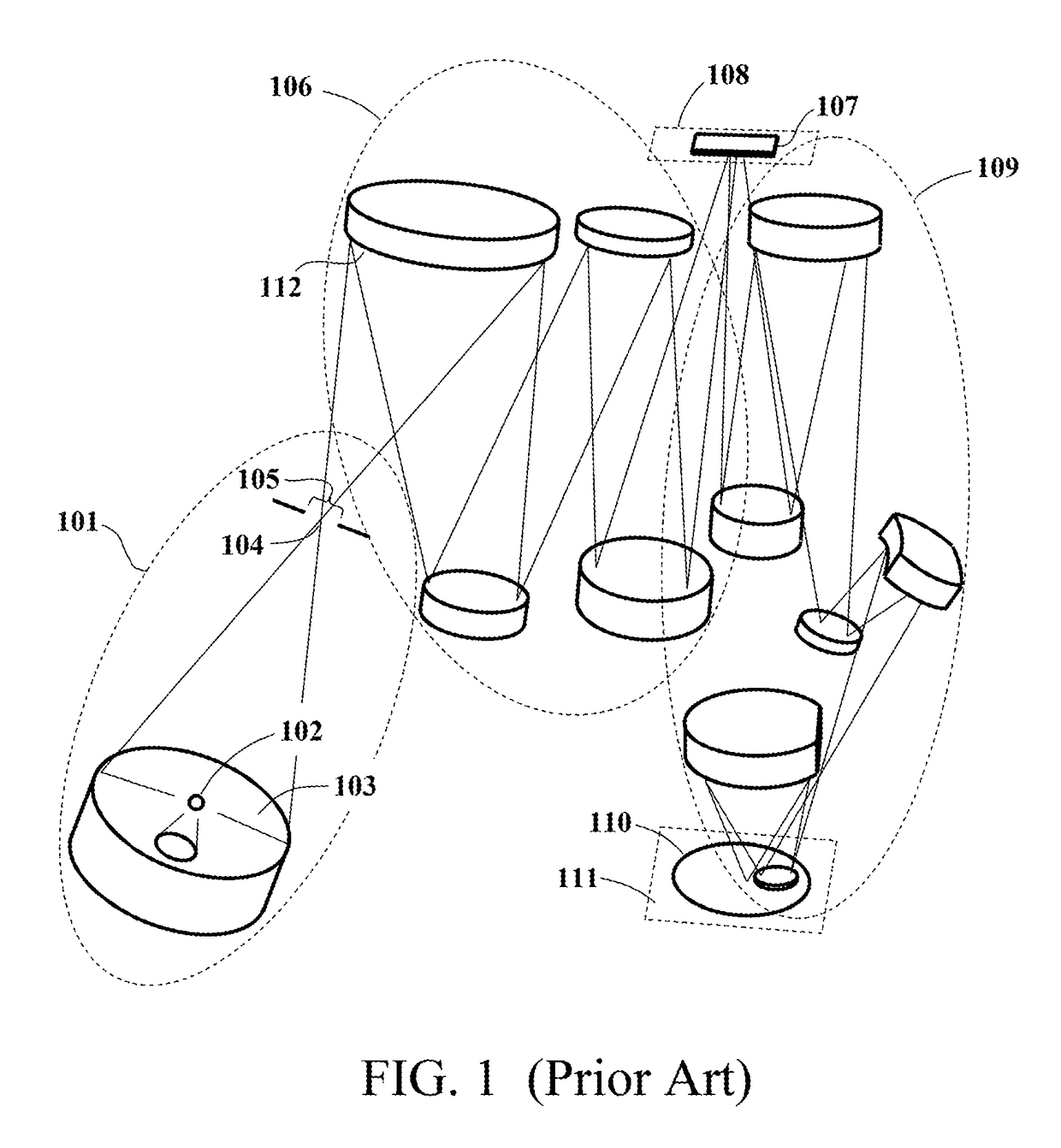EUV light source with spectral purity filter and power recycling
a technology of spectral purity filter and light source, applied in the field of radiation generation, can solve the problems of not achieving the full rejection of all out-of-band radiation, not fully excluding other wavelengths, and affecting the lithography process, and achieve the effect of optimizing the diffraction efficiency of in-band wavelengths
- Summary
- Abstract
- Description
- Claims
- Application Information
AI Technical Summary
Benefits of technology
Problems solved by technology
Method used
Image
Examples
Embodiment Construction
[0065]FIG. 6 and the enlarged view in FIG. 7 illustrate the spectral filtering function. A diffraction grating 701 on the collection mirror 103 is used to separate in-band and out-of-band radiation. The mirror does not focus undiffracted (zero-order) radiation from the plasma onto the IF 104 as in the prior-art system of FIG. 2; instead the zero-order reflection is directed outside of the IF aperture 105. The grating is not constructed primarily to diffractively scatter IR radiation out of the IF aperture; it is rather designed to efficiently diffract in-band EUV radiation into the aperture.
[0066]Some out-of-band radiation may be diffractively scattered by the grating, but the spectral filtering mechanism eliminates out-of-band radiation whether or not it is diffracted. The mechanism's operational principle is based on the grating's chromatic dispersion; it does not rely on zero-order extinction.
[0067]In the FIG. 6 embodiment, the mirror and grating are axially sym...
PUM
 Login to View More
Login to View More Abstract
Description
Claims
Application Information
 Login to View More
Login to View More - R&D
- Intellectual Property
- Life Sciences
- Materials
- Tech Scout
- Unparalleled Data Quality
- Higher Quality Content
- 60% Fewer Hallucinations
Browse by: Latest US Patents, China's latest patents, Technical Efficacy Thesaurus, Application Domain, Technology Topic, Popular Technical Reports.
© 2025 PatSnap. All rights reserved.Legal|Privacy policy|Modern Slavery Act Transparency Statement|Sitemap|About US| Contact US: help@patsnap.com



